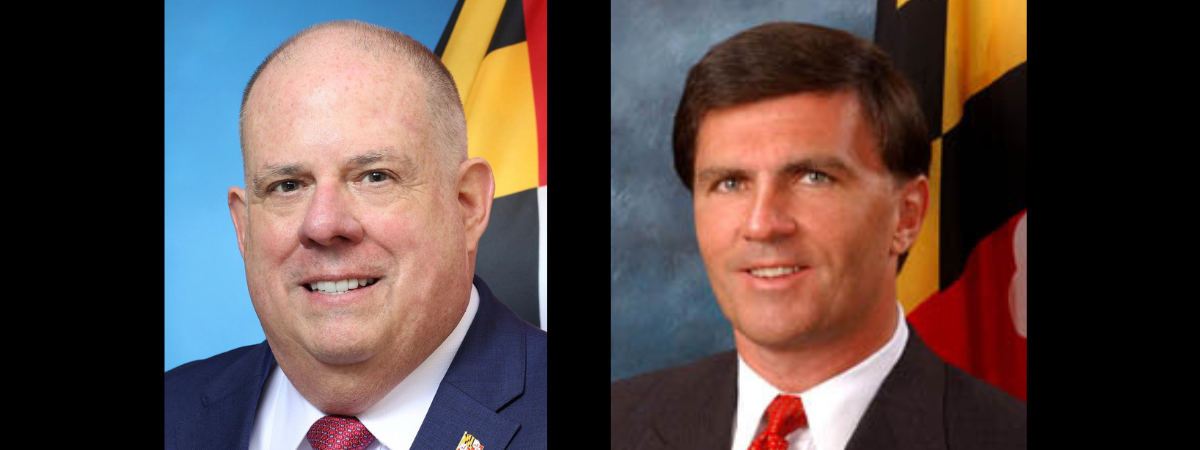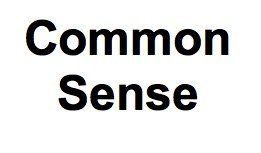Candidates and the Economy – a Guide to the Maryland Primary

When asked what issue concerns them most coming into this year’s midterm elections, most Americans, according to polls, cite the economy, especially inflation. A Gallup poll taken in May showed that 77% of respondents believe the national economy is getting worse, with 85% rating giving it a rating of “fair” or “poor.” Inflation is expected to be the deciding issue for many voters in this November's elections.
With that in mind, Common Sense for the Eastern Shore is reporting the statements of the candidates for governor and lieutenant governor of Maryland, and for representative for the First Congressional District, which includes all of the Eastern Shore. Taken from the candidates’ websites, here are excerpts outlining their positions on the state’s economy. Links to the websites are provided for readers who want to explore the candidates’ full statements.
All but one of the Republican candidates for governor make tax cuts the key — often the only — element of their economic policies. By contrast, most of the Democrats offer detailed road maps to improve the economy of the state and the economic status of its residents.
The primary election is scheduled for Tuesday, July 19. Only residents who have registered their political party preference are eligible to vote, and they may only vote for their party’s candidates. Thus Democrats may only vote for Democratic candidates, and Republicans only for Republican candidates.
Governor and Lt. Governor
There are four choices on the Republican ballot for governor and lieutenant governor.
Dan Cox + Gordana Schifanelli — Republican
“Reduce taxes for families, businesses, and retirees through economic ingenuity to awaken a new era of economic prosperity for Maryland.”
Robin Ficker + LeRoy F. Yegge, Jr. — Republican
“A two-cent cut in the Maryland sales tax will give every Marylander a tax cut every day and give Maryland a much needed ‘business-friendly,’ label. Marylanders will save hundred$/year, or together more than $1.7 billion annually.” Ficker promises to work to attract major employers, such as Apple, Amazon, and Facebook, to the state to create new jobs.
Kelly Schulz + Jeff Woolford — Republican
www.kellyschulzforgovernor.com
“I will fight every effort by the legislature to raise taxes — and I will use my platform and position to fight for tax cuts every single year that I am in office.” “One of my top priorities as governor will be to cut taxes for all Marylanders, which begins with fighting to give our retirees the relief they deserve.”
Joe Werner + Minh Thanh Luong — Republican
“I envision the growth of small businesses and educational systems, creating policies centered on economic opportunity and our community safety.”
There are 10 choices on the Democratic ballot for governor and lieutenant governor.
Rushern Baker III + Nancy Navarro — Democrat
“Recovery is an opportunity to create a state where everyone can benefit from a thriving and competitive economy. We want to deliberately invest in the people and infrastructure of underserved communities, eliminate discriminatory practices in lending, ensure equal access to grants, and make Maryland the Black business startup capital of the nation.”
Jon Baron + Natalie Williams — Democrat
“As governor, I would –
Help unemployed workers get back on their feet:
- Providing immediate job-search and other reemployment services when Marylanders file for unemployment.
- Offering a sizable earnings supplement to long-term unemployed workers who find a full-time job.
- Address the longstanding problems of stagnant wages and economic mobility for low- and moderate-income Marylanders by:
- Providing high-quality job training to every young adult who wants to advance.
- Supporting English language learners entering the workforce.
- My approach to job opportunity (and other challenges) is fiscally responsible in a way that should resonate with Maryland’s business community. Expansion of proven-effective programs can be accomplished, in most cases, using existing state funds. Our next governor needs to chart a course that ensures all Marylanders share in the recovery.”
Peter Franchot + Monique Anderson-Walker — Democrat
“The Franchot administration will create 100,000 family-supporting jobs in 100 weeks through
- targeted investment in productive infrastructure projects;
- the creation of a statewide jobs-training program in partnership with the private sector and unions;
- the dramatic improvement of the operating environment for small businesses via more efficient government services, streamlined and coordinated regulation, and better access to capital.
The Franchot administration will pair a bold expansion of Maryland’s public works with a commitment to robust project labor agreements and community benefits agreements and negotiations with the private sector on every project. A special emphasis in these agreements will be placed on apprenticeship training and local hiring.
In addition to targeted and stimulative investment in infrastructure, the Franchot administration will champion the interests of the state’s small businesses that are the backbone of the state’s economy. To that end, a Franchot administration will review all government regulatory processes and fees that impact small businesses to ensure that bureaucratic red tape and associated costs are not disproportionately or unnecessarily impacting small businesses.”
Douglas F. Gansler + Candace Hollingsworth — Democrat
- Raise the minimum wage.
- Hire minority-owned businesses as sub-contractors and prime contractors alike.
- Ease access to capital for Black-owned businesses.
- Ensure Black-owned cannabis and sports betting companies have a fair shot to succeed.
- Prioritize returning citizens’ employment opportunities.
- Meaningfully diversify state government at every level.
- Laser-focus on helping Baltimore realize its unlimited promise.
Ralph W. Jaffe + Mark Greben — Democrat
www.fedupwithcrookedpolitics.com
“The Jaffe movement’s mission is to put a stop to corruption in the Maryland political system and to replace it with true, ethical reform.
- No tax increases: Will oppose any attempts by the General Assembly to increase taxes.
- Will attempt to stop Baltimore Gas and Electric from ripping off its customers. BGE needs to be more sensitive to the needs of its customers rather than the needs of its stockholders.”
Ashwani Jain + LaTrece Hawkins Lytes — Democrat
- Eliminate the state income tax for 95% of workers.
- Guarantee free public transit.
- Create the first statewide guaranteed jobs programs.
John King + Michelle Daugherty Siri — Democrat
“A King-Siri administration will focus efforts around five key planks:
Ensuring everyone has access to the building blocks of economic opportunity.
- Ensuring everyone has access to the building blocks of economic opportunity.
- Building strong pathways so that people have the skills and opportunities required for the jobs they want.
- Supporting good jobs in healthy businesses.
- Building vibrant communities statewide.
- Advancing equity and making sure our economy works for every Marylander by directly tackling systemic disparities.”
Wes Moore + Aruna Miller — Democrat
- Build the workforce of the future by transforming Maryland’s workforce development system.
- Drive innovation and technology advancements by producing 150,000 new STEM graduates.
- Grow new industries and businesses by leveraging relationships with Maryland’s federal agencies, military installations, and colleges and universities.
- Attract and retain talent by creating a talent-recruitment function in the Department of Commerce and by implementing incentives for remote workers to move to Maryland.
- Support small and micro businesses by modernizing the regulatory process and making it easier for Maryland businesses to compete and win.
- Support working families by raising the minimum wage to $15 an hour by 2023, implementing a comprehensive paid family and medical leave program in Maryland, and leveraging new federal transportation funds to connect people with new opportunities.”
Tom Perez + Shannon Sneed — Democrat
“Tom believes that our children deserve a better future than we have today. And as a civil rights attorney, lifelong ally of the labor movement, and career champion of working families, Tom knows the best way to secure that bright future is to do the work to set up a true win-win: creating good, secure jobs in our communities so the economy thrives, and ensuring that Marylanders have the in-demand skills they need to thrive in those jobs. As governor, he will stand up for Maryland’s working families by fighting for things such as income equality, affordable childcare, collective bargaining, pensions, paid family leave, a more progressive tax system, fair wages, unemployment insurance that functions, and real investments in workforce development so everyone in this state can win.”
Jerome M. Segal + Justinian M. Dispenza — Democrat
- Guaranteed basic employment: A legal guarantee of at least 32 hours/week of paid employment.
- Transition to the four-day work week via a time-liberty law allowing workers to opt for four days after three years on the job.
- Building the simpler living option by living wage policies to reduce the cost of meeting core economic needs, thus making the four-day work week viable for all.
- This living wage policy matrix includes a right to a one-time, zero-interest mortgage for modest or tiny new homes, and free education pre-K through college, reducing automobile dependency by free public transit, and the “near-free EV” as well as highly subsidized alternatives to the car.
- Tax transformation that includes tax-elimination for the bottom third of households and more progressive taxation among the top one-third, including progressive property taxes.
Congress 1st District
Andrew P. Harris — Republican – incumbent
Rep. Harris is unopposed in the Republican primary election. His website does not address the economic issues facing the state.
There are two Democratic choices on the ballot for 1st District representative.
R. David Harden — Democrat
- Jobs: “I support the American Jobs Plan to create economic opportunities for all Marylanders. The district has incredible opportunities with agriculture, tourism, and a Chesapeake Bay economy, but this also means creating the jobs that prepare our district for a new energy and climate future. In the coming decade, this district can also build a more innovative economy focused on health-care service and delivery, biotechnology to improve people's lives, and advanced defense technologies to safeguard the homeland.”
- Small businesses: “As we move into a post-covid economy, I will introduce a regulatory approach to prioritize the resiliency of our local businesses. Equally important, our small businesses can use a hand to leverage capital, technology, and expertise to connect to the highest markets in the world today.”
- A living wage: “$15 minimum wage is the essential starting line to secure that all Americans can put food on the table day in and day out. I support the Protecting the Right to Organize Act.”
Heather R. Mizeur — Democrat
“My top priority as your congresswoman will always be the economy first.
Here is my plan:
- Reining in inflation and lowering costs: Address the inflation that is raising everyday costs for working families.
- Tax relief for small businesses and support for the middle class: Reduce economic and regulatory pressures on small businesses. Recognize that a strong middle class fuels growth.
- Make more on the Shore — Manufacturing and construction: Create conditions for more manufacturing and construction jobs in our communities.
- 21st Century skills — Workforce training and education: Teach job skills that will match the needs of employers.
- Housing and community development: Provide access to quality and affordable housing in safe and healthy communities as the foundation for all other economic and social activities.
- Infrastructure: Seize historic investment opportunities for broadband, ports, roads, bridges, freight rail, public transit, airports, wastewater, and utilities.
- Agriculture and forestry: Partner with ag innovators to increase market opportunities for next-level local foods, products, services, and curated experiences.
- Commercial fishing and aquaculture: Strengthen commercial fishing and aquaculture to help each grow and thrive for generations to come.
- Arts and culture: Recognize the role arts and humanities can play as a catalyst for tourism, jobs, and regional economic growth.
- Defense and cybersecurity: Provide support for growing defense technologies and create new defense and cybersecurity jobs in the First District.”
Peter Heck is a Chestertown-based writer and editor, who spent 10 years at the Kent County News and three more with the Chestertown Spy. He is the author of 10 novels and co-author of four plays, a book reviewer for Asimov’s and Kirkus Reviews, and an incorrigible guitarist.
Common Sense for the Eastern Shore







